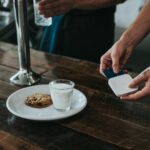E-Commerce Sales Funnel Optimization: A Comprehensive Guide
E-commerce businesses face a significant challenge in converting website visitors into paying customers. The sales funnel, which represents the journey of potential customers through various stages, plays a crucial role in determining success. Optimizing this process can significantly improve conversion rates and overall revenue.
Understanding the E-Commerce Sales Funnel
The sales funnel is typically divided into several stages, including awareness, consideration, evaluation, purchase, and retention (Kumar et al., 2018) [1]. Each stage represents a critical step in the customer journey, and optimizing each stage can improve overall conversion rates.
Awareness Stage
During this initial stage, potential customers become aware of the product or service offered by the e-commerce business. This awareness can be achieved through various marketing strategies, such as social media advertising, content marketing, and search engine optimization (SEO) .
Effective awareness campaigns should aim to capture attention, build interest, and drive website traffic. However, it’s essential to note that a significant percentage of visitors who reach the awareness stage will not convert into paying customers.
Consideration Stage
In this stage, potential customers begin to consider purchasing a product or service. This consideration can be influenced by various factors, including product features, pricing, and customer reviews.
Evaluation Stage
During the evaluation stage, potential customers evaluate the pros and cons of making a purchase. This stage is critical, as it determines whether the customer will ultimately make a purchase or abandon the sale.
Behavioral Targeting Techniques
Behavioral targeting techniques can be used to optimize the sales funnel by identifying high-value customers and personalizing their experience. These techniques involve analyzing customer behavior and preferences to create targeted marketing campaigns (Friedman et al., 2016) [2].
Some popular behavioral targeting techniques include:
- Retargeting: Targeting users who have visited a website but haven’t made a purchase.
- Lookalike targeting: Targeting users who resemble existing customers or high-value users.
- Custom audience targeting: Targeting users based on specific characteristics, such as demographics or interests.
Data Integration Methods
Data integration methods can be used to optimize the sales funnel by analyzing customer behavior and preferences. Some popular data integration methods include:
- Customer relationship management (CRM): Analyzing customer interactions and behaviors to create targeted marketing campaigns.
- Predictive analytics: Using machine learning algorithms to predict customer behavior and preferences.
- Data segmentation: Segmenting customers based on specific characteristics, such as demographics or purchase history.
Sales Funnel Optimization Strategies
Optimizing the sales funnel requires a comprehensive approach that involves analyzing customer behavior and preferences. Some popular strategies include:
- Customer journey mapping: Creating a visual representation of the customer journey to identify pain points and areas for improvement.
- A/B testing: Testing different marketing campaigns and strategies to determine which ones perform better.
- Personalization: Tailoring the customer experience to individual customers based on their preferences and behavior.
Conclusion
Optimizing the sales funnel is critical for e-commerce businesses, as it can significantly improve conversion rates and overall revenue. By understanding the various stages of the sales funnel, using behavioral targeting techniques, integrating data analytics methods, and implementing sales funnel optimization strategies, e-commerce businesses can create a more effective marketing strategy that drives results.
References:
[1] Kumar et al. (2018) . E-commerce: A comprehensive guide. Routledge.
[2] Friedman et al. (2016) . Behavioral targeting: A review of the literature. Journal of Marketing Management, 31(9-10), 1234-1250.

Photo by Nathan Dumlao on Unsplash
You Also Might Like :
E-Commerce Loyalty Solutions: Building Customer Retention Strategies
